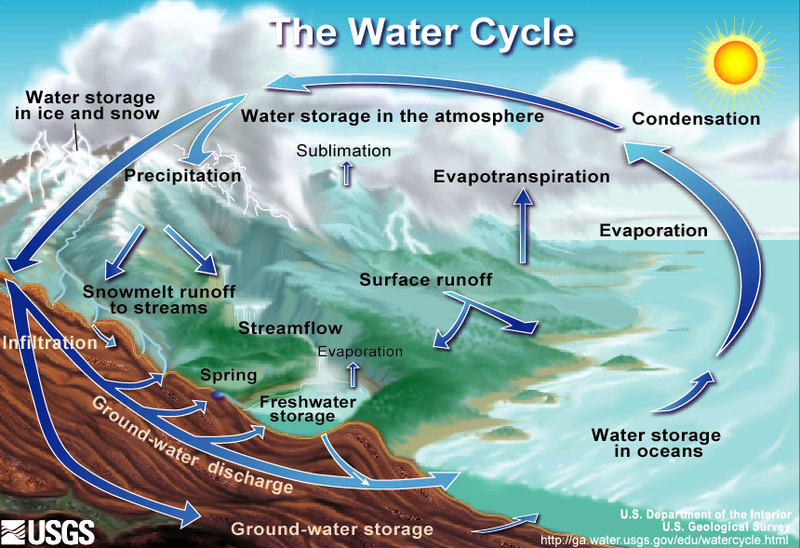To Autumn
By John Keats
Text is here: http://www.rc.umd.edu/editions/poets/texts/toautumn.html
In my last post I discussed Keats' theory of negative capability. Basically, he believed that truly great writers could surround themselves with life's monumental problems and be satisfied with simply dwelling with the questions instead of scrambling for answers. In his later work, especially in his later series of odes, he really started to incorporate this idea of negative capability.
To Autumn seems like it would be a turn from this idea. Only three stanzas long, it is very short, not typical for the traditional ode. The poem is very positive. Keats joyously describes the autumn harvest; he discusses trees producing fruit, bees producing honey, and fields producing grain. You'd be hard-pressed to find anything melancholy in this poem.
Keats had tuberculous for much of his adult life. He recognized that he had the disease, and he was aware that there was no cure at the time. It seems that he would be confronted with his death every day, which did eventually kill him in the 1820's. 'To Autumn' was one of his last poems ever written. It is easy to see then, that human mortality probably plays a part in the work.
I think Keats chooses autumn as his subject matter because it is the season directly before winter, traditionally associated with death. Instead of mourning the loss of the summer, though, he revels in the moment. He accepts that winter will come, but he doesn't let that ruin his enjoyment of what life has to offer. I think "To Autumn" dwells in a sort of positive negative capability. Keats is confronted with death; winter is coming. However, instead of brooding, he enjoys his life in the moment. It almost seems like this is an emotion that transcends negative capability. Instead of being surrounded by life's impossible questions, the speaker accepts that they are unanswerable, and that allows him to find pleasure in the world around him. "To Autumn" is a fitting end to a writing career; it shows a clear switch from struggle to acceptance of things that cannot change. To me, the feelings of the speaker is a noble mode to enter death with.
--B.E.
Thursday, April 23, 2009
Friday, April 17, 2009
Ode to a Nightingale and Negative Capability
"Ode to a Nightingale"
By John Keats
Text can be found here: http://www.rc.umd.edu/rchs/reader/nightingale.html
Yes, folks, another romantic poem about nightingales.
Since Classical times, nightingales have been associated with melancholy and sadness. The Romantics did love their melancholy (they'd probably be prescribed Zoloft today). In another poem we read, by Samuel Coleridge, the speaker discusses how we have projected this melancholy on the nightingale, and he proposes we project happier meanings to the nightingale's song. Keats doesn't seem to agree with this theory; instead, he uses the bird as a metaphor while he meditates about his own demise. Basically, "Ode to a Nightingale" is pretty depressing.
Keats is famous for coming up with the poetical theory of negative capability. Negative capability, according to Keats in a letter to a friend, is when a poet can express feelings of uncertainties, mysteries, and doubts without necessarily trying to find solutions or answers to these problems. He said Shakespeare was a master at negative capability. He was able to wade into these deep, dark questions regarding death and the afterlife and accept the fact that the questions might be unanswerable. Keats attempted to use negative capability technique in "Ode to a Nightingale." He delves into his fears about his own mortality. Throughout the poem he tries to escape his fears, but keeps bouncing back into anxiety. He tries alcohol, escaping in nature, and finally finds that death is the only escape. Pretty melancholy.
Throughout the poem, he never really finds a satisfying answer to his depressing situation. This is why "Ode to a Nightingale" is a brilliant exploration of negative capability.
--B.E.
By John Keats
Text can be found here: http://www.rc.umd.edu/rchs/reader/nightingale.html
Yes, folks, another romantic poem about nightingales.
Since Classical times, nightingales have been associated with melancholy and sadness. The Romantics did love their melancholy (they'd probably be prescribed Zoloft today). In another poem we read, by Samuel Coleridge, the speaker discusses how we have projected this melancholy on the nightingale, and he proposes we project happier meanings to the nightingale's song. Keats doesn't seem to agree with this theory; instead, he uses the bird as a metaphor while he meditates about his own demise. Basically, "Ode to a Nightingale" is pretty depressing.
Keats is famous for coming up with the poetical theory of negative capability. Negative capability, according to Keats in a letter to a friend, is when a poet can express feelings of uncertainties, mysteries, and doubts without necessarily trying to find solutions or answers to these problems. He said Shakespeare was a master at negative capability. He was able to wade into these deep, dark questions regarding death and the afterlife and accept the fact that the questions might be unanswerable. Keats attempted to use negative capability technique in "Ode to a Nightingale." He delves into his fears about his own mortality. Throughout the poem he tries to escape his fears, but keeps bouncing back into anxiety. He tries alcohol, escaping in nature, and finally finds that death is the only escape. Pretty melancholy.
Throughout the poem, he never really finds a satisfying answer to his depressing situation. This is why "Ode to a Nightingale" is a brilliant exploration of negative capability.
--B.E.
Tuesday, April 14, 2009
Ode to the West Wind
Ode to the West Wind
By Percy Shelley
Link to text:http://www.rc.umd.edu/rchs/reader/westwind.html
Although this poem is titled as an ode to the wind, Shelley is actually describing the poet's role as an instrument for moral and political change. In describing the wind, he discusses how he wishes his words could be swept around the world like the wind blows. He also goes into great depth describing how the wind effects all of nature. The wind changes the seasons and weather, even changing things underwater. Shelley desires that sort of ability; he wants to have that sort of wide-ranging effect on people.
The poet's ability to reach people was especially dear to Shelley, who was in self-imposed exile in Italy when he composed his poem. He spent the rest of his life away from England and found it difficult to reach a large English audience with his poetry. "Ode to the West Wind" is sort of a description of his life-long goal. England, in the throws of the Industrial Revolution, was constantly changing and modernizing. Shelley lamented not being able to shape this change in any substantial way from his Italian home.
So instead of being an ode to the west wind, this poem is actually about poets. Shelley was truly writing to change the world; he believed poetry had a transformative power. "Ode to the West Wind" is a cry asking for the ability to make the change he desired.
By Percy Shelley
Link to text:http://www.rc.umd.edu/rchs/reader/westwind.html
Although this poem is titled as an ode to the wind, Shelley is actually describing the poet's role as an instrument for moral and political change. In describing the wind, he discusses how he wishes his words could be swept around the world like the wind blows. He also goes into great depth describing how the wind effects all of nature. The wind changes the seasons and weather, even changing things underwater. Shelley desires that sort of ability; he wants to have that sort of wide-ranging effect on people.
The poet's ability to reach people was especially dear to Shelley, who was in self-imposed exile in Italy when he composed his poem. He spent the rest of his life away from England and found it difficult to reach a large English audience with his poetry. "Ode to the West Wind" is sort of a description of his life-long goal. England, in the throws of the Industrial Revolution, was constantly changing and modernizing. Shelley lamented not being able to shape this change in any substantial way from his Italian home.
So instead of being an ode to the west wind, this poem is actually about poets. Shelley was truly writing to change the world; he believed poetry had a transformative power. "Ode to the West Wind" is a cry asking for the ability to make the change he desired.
Monday, April 06, 2009
Shelley's "The Cloud"
The Cloud
By P.B. Shelley
Text: http://www.english.upenn.edu/Projects/knarf/PShelley/cloud.html

Shelley's poem "The Cloud" is told from the point of view of the cloud. The cloud, aware of his powerful and immortal position, revels in his abilities to control the weather. The cloud is haughty and proud of his capabilities of effecting the sun, moon, and the sea.
Percy Shelley was very interested in the developing field of natural science that was blooming during his lifetime in the late 17th/early 18th Centuries. Shelley was vastly fascinated by the progression of science during this time, which included giant steps in the study of biology and chemistry. This interest shows up in the poem. Shelley has the cloud describe such natural processes as storms, the water cycle, and precipitation.
However, the poem is also figurative. It is a narrative description of the sublime from the point of view of the sublime. Instead of just discussing and admiring the sublime like most Romantic poets, Shelley actually tries to speak as the sublime. In doing so, he seems to think sublime entities are aware of their sublimity. Being concerned with science, he seems to be breaking down sublime beings and taking away some of their awe as well.
The poem is also interesting because it makes hydrologic cycle poetic.

-B.E.
By P.B. Shelley
Text: http://www.english.upenn.edu/Projects/knarf/PShelley/cloud.html

Shelley's poem "The Cloud" is told from the point of view of the cloud. The cloud, aware of his powerful and immortal position, revels in his abilities to control the weather. The cloud is haughty and proud of his capabilities of effecting the sun, moon, and the sea.
Percy Shelley was very interested in the developing field of natural science that was blooming during his lifetime in the late 17th/early 18th Centuries. Shelley was vastly fascinated by the progression of science during this time, which included giant steps in the study of biology and chemistry. This interest shows up in the poem. Shelley has the cloud describe such natural processes as storms, the water cycle, and precipitation.
However, the poem is also figurative. It is a narrative description of the sublime from the point of view of the sublime. Instead of just discussing and admiring the sublime like most Romantic poets, Shelley actually tries to speak as the sublime. In doing so, he seems to think sublime entities are aware of their sublimity. Being concerned with science, he seems to be breaking down sublime beings and taking away some of their awe as well.
The poem is also interesting because it makes hydrologic cycle poetic.

-B.E.
Subscribe to:
Posts (Atom)

